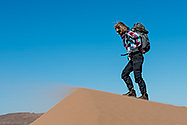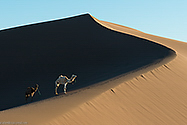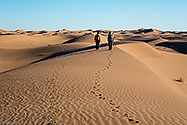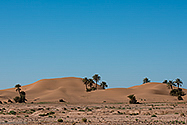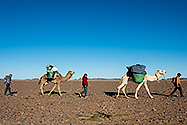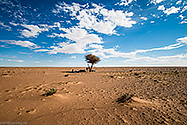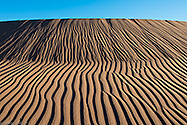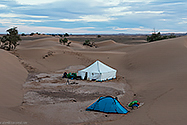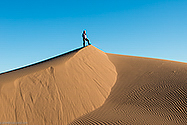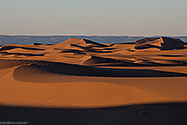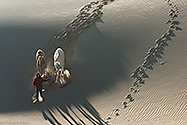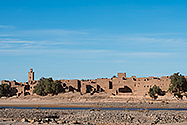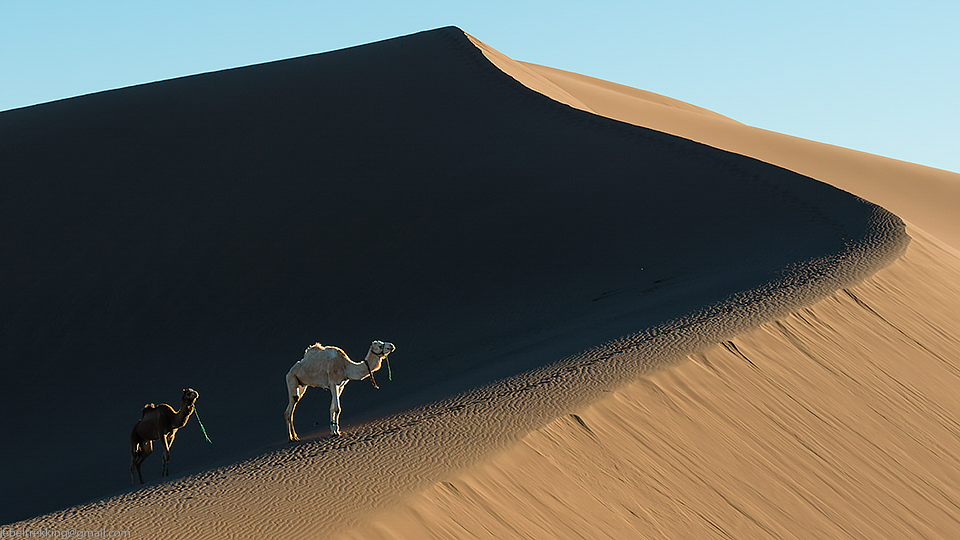
Sand dunes, plateaus and clay villages in serene Sahara
It is a restful, almost meditative experience to wander over the magnificent expanses of the Sahara, where total stillness reigns. The desert with its billowing sand dunes and far-reaching plateaus is bordered by verdant oases and fascinating clay villages. On the drive between Marrakech and the trekking area, the views of the scenic landscape are a rewarding experience in themselves.
THE TOUR DAY BY DAY
Day one: Marrakech – Nesrate
Setting off by car from Marrakech towards the southeast, we approach High Atlas leaving the flat country behind us. We drive on serpentine roads up over the Tizi n´Tichka Pass at 2 260 meters. From up here the panoramic views of the surroundings are magnificent. Our drive continues through a beautiful valley with villages scattered over the mountainsides. Soon fantastic scenery opens up before our eyes, including Jebel Toubkal which is North Africa´s highest mountain at 4 167 meters, Jebel Siroua at 3 304 meters, and the M´Goun massif with its summit at 4 068 meters.
After passing Ouarzazate, nicknamed “the door of the desert”, and the green oases of Aït Saounes, we continue towards the beautiful Drâa Valley and follow the Drâa River past blooming oases and large date palm cultivations. We pass several ksour, traditionally fortified villages, enclosed by artistically decorated walls. On the mountain slopes lie many kasbahs, once great fortified homes for the ruling families, their earthen-colored walls seem to melt into the mountainsides. In the southern part of the valley, the desert stretches far into the distance before us.
It is early evening when we reach our goal. We pitch our camp just outside the village of Nesrate where we meet up with our dromedary drivers with their dromedaries.
Day two: Nesrate – Tidri (5,5 to 6 trekking hours)
We begin the day by walking through the walled village of Nesrate with its brownish-rose clay houses, then along watering channels and past groves of date-palm greenery. On the outskirts of the village, we pass fields where the villagers grow barley and other grains.
Leaving the village behind us we walk out onto the expansive desert plateau with the grandiose mountain range Mount Beni as a backdrop. We will soon see our first sand dunes where palm trees with their bushy crowns grow in the hollows. Further along, we walk through an oasis crossed with watering channels, its flourishing greenery standing in sharp contrast to the colors of the surrounding landscape.
In the village of Zaouit Sidisalh, also traditionally built of clay, lies the region’s local collage. Once we have passed the village, we will not see any more houses or settlements until the last day of our trek. We continue over the plateau, thinly covered with low trees and bushes, and cross the Drâa riverbed which is usually dry. In a magical landscape of billowing sand dunes under Mount Beni’s slope, we pitch our tents for the night.
Day three to five: Through the desert (6 to 7 trekking hours per day)
For the coming three days our little caravan will roam Sahara’s endless expanses and fascinating landscape. Billowing sand dunes formed by the wind alternate with open plateaus and low hills. We can see a glimpse of the mountains on the border of Algeria in the distance. Walking on the plateau is easy as the terrain is built up of small stones, gravel, and packed sand while going through the soft sand dunes is a little more strenuous.
To find oneself in this ocean of sand with open spaces in every direction is a true wilderness experience and a very restful and almost meditative one. Only solitary Acacia and Tamarisk trees break off the sun-drenched landscape, providing welcome shade at lunchtime and on rest breaks.
In absolute tranquility, with only a bird or two breaking the silence with a chirp or a flapping wing, the sun lights the landscape with ever-changing colors. At sunset, the desert glows in warm and intense light, while intriguing patterns, forms, and shadows appear in the sand dunes.
Our campsites are beautifully situated in hollows surrounded by sand dunes. We climb to the top of them and gaze out over vast, majestic expanses of sand. Although we are not at a very high altitude, it feels as if the whole world lies beneath our feet. When darkness falls and the starry sky arches over our camp we can, if we are lucky, get a glimpse of the shy fennec, a desert fox, if it dares come out under the cover of darkness.
If ordered beforehand, it is possible here, to shorten the trek through the desert to 2 days instead of 3, for those who wish to do so.
Day six: To Ouladriss (6 to 7 trekking hours)
Today we wander back again toward populated areas. We cross the Drâa River’s broad, majestic riverbed just below the village of Bouno, another sand-colored ksour. The village is enclosed by the traditional tall walls with towers and pinnacles. These protect the houses built of earth mixed with straw and water. The dwellings are ingeniously constructed so they afford cooler temperatures in the summer and preserve heat in the winter.
Nowadays, many of the original inhabitants have left Bouno and moved away, seeking the comforts of more modern villages or opportunities to study or work. But if we are fortunate, we may meet a villager who will invite us to have Moroccan mint tea in one of the old family houses.
After our visit to Bouno we walk the short stretch to the camp in Ouladriss where we spend the night at the guest house.
Day seven: Ouladriss – Marrakech
The only thing left now is our trip back to Marrakech. We turn back through the beautiful Drâa Valley and stop perhaps at the local souk in Tansikht to buy a box of delicious dates to take home. Then we drive on to Marrakech via Ouarzazate and over the spectacular Tizi n’Tichka Pass with its panoramic views.
Extra options (one or two days)
Why not take the opportunity to discover the Drâa Valley and its interesting sights on the way back to Marrakech? In the southern part of the valley lies the walled Ksar of Tamegrout that, among other things, houses an interesting library with a collection of very valuable old handwritten manuscripts. Outside the walls, one can visit the local potters, reputed to be among the foremost in the land.
Other attractions worth seeing on the way back to Marrakech, are the famous Atlas film studios in Ouarzazate, the UNESCO world heritage Ksar of Aït Benhaddou, and the fascinating but partly dilapidated Kashba Telouet. The latter is situated in the beautiful, narrow Telouet valley where one can also visit an interesting salt mine.

